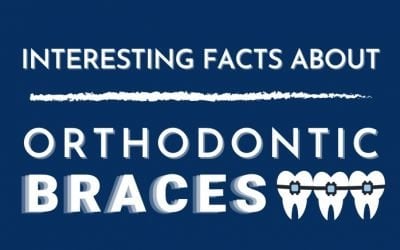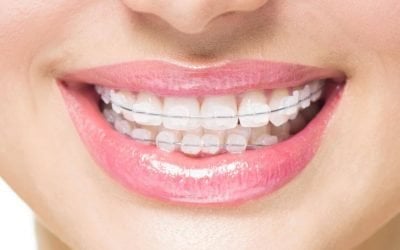Can Orthodontics Help an Impacted Tooth?
For many of us, the first time we hear about having an impacted tooth is at the dentist. In the early stages, you may not realise that you have an impacted tooth as it may not affect your bite or cause pain. However if left untreated it can lead to complex issues that are difficult to treat. If your dentist or orthodontist has just informed you about an impacted tooth, the following information will help you better understand the diagnosis and your treatment options.
What is an impacted tooth?
An impacted tooth is one that fails to erupt into the mouth at the expected time. The full set of permanent teeth (excluding the wisdom teeth) can come through between the ages of 10 to 14 years. Should you or your child have delayed loss or delayed replacement of a baby tooth, you should see a dentist or orthodontist to determine the cause of the delay.
Types of impacted teeth
There are several types of impacted teeth, depending on the direction of growth below the gum line. The types of impacted teeth you may see include:
- Horizontal impaction is where a tooth grows at roughly a 90s degree angle to the rest of your teeth, often placing pressure on the roots of adjacent teeth
- Vertical impaction is where the tooth is erupting in the correct direction, but has developed too close to the neighbouring teeth which is stopping it from erupting.
- Angular impaction is where the tooth grows at an angle, causing it to be blocked below the gum line.
- Partial eruptions are usually a form of angular impaction. This is where the tooth begins to push through the gums but is stopped by its close proximity to other teeth.
Impacted tooth: signs and symptoms
The most common presentation of an asymptomatic impacted tooth is the presence of a baby tooth when it should have been lost, or the lack of eruption of a replacement adult tooth. A visit to the orthodontist for an assessment, which will often require a panoramic X-ray (OPG) and or Cone Beam CT to be taken, will clearly demonstrate the position of the tooth/teeth in question. Appropriate treatment can then be undertaken to manage the situation.
Other signs you may have an impacted tooth include:
- Pain or tenderness on the gums
- Prolonged headaches
- Redness and swelling of the gums
- Difficulty opening the jaw or mouth
What are the risks of an impacted tooth?
If left untreated, an impacted tooth can cause a number of issues with the adjacent teeth. Impacted teeth may or may not cause discomfort or pain, however, despite this, the problem tooth may place undue pressure on the surrounding teeth and gums which, in the worst-case scenario, may lead to the eventual loss of adjacent teeth.
How can orthodontic treatment help an impacted tooth?
The orthodontic approach to an impacted tooth generally depends on your age and the angle or direction that the impacted tooth is growing and how successfully the impacted tooth can be brought into the arch.
If diagnosed early enough, your orthodontist may help correct the development of an impacted tooth by early removal of appropriate baby teeth, possibly combined with the placement of a space maintainer or expander appliance.
Sometimes, an impacted tooth may erupt by themselves if enough space is created for its eruption.
If the impacted tooth is located in an ectopic location, then surgical intervention may be necessary, to expose the impacted tooth. Orthodontic treatment commonly involving braces is necessary in these cases to control the path of eruption of the impacted tooth, to minimise damage to the tooth itself, and the surrounding teeth.
In certain cases, the impacted tooth may not be able to be salvaged and may need to be removed.
The best way to receive a full diagnosis and treatment plan is to have a consultation with a specialist orthodontist. They will be able to advise you with appropriate information regarding the impacted tooth/teeth, and the best treatment plan to manage the situation.
To read the original article, click here.
DISCLAIMER:
The content has been made available for informational and educational purposes only. Central Coast Orthodontics does not make any representation or warranties with respect to the accuracy, applicability, fitness, or completeness of the content.
The content is not intended to be a substitute for professional personal diagnosis or treatment. Always seek the advice of your dentist or another qualified health provider with any questions you may have regarding a dental or medical condition. Never disregard professional advice or delay seeking it because of something you have read or seen on the Site.
Learn More About
Related Articles
Interesting Facts About Orthodontic Braces
Wanting to get orthodontic braces but feeling unsure because you don't have knowledge about its...
Three Benefits of Invisalign
Did you know that aside from being an option for straightening your teeth, there are also benefits...
Metal Braces: Does This Traditional Dental Technology Have a Future?
Of all the medical professions, dentistry has always generated the most fear and continues to;...
Ceramic Braces: Ancient Origins, Bright Future?
What exactly is ceramic? Essential to daily life and classified as inorganic and non-metallic...







